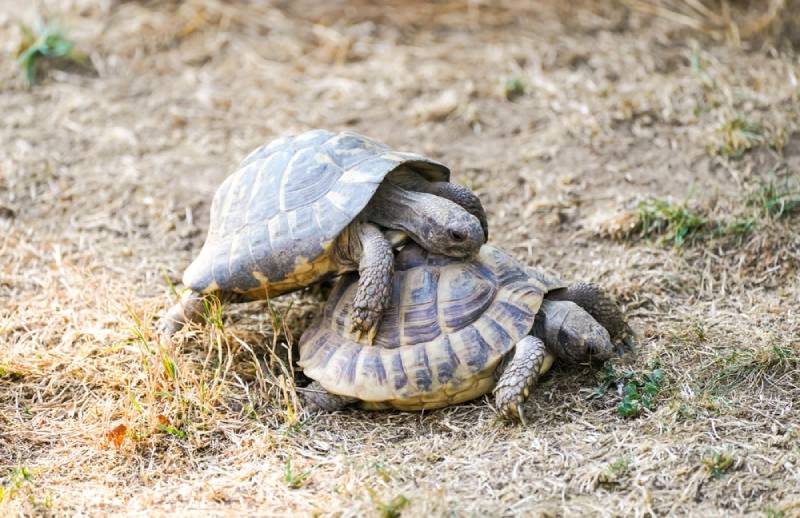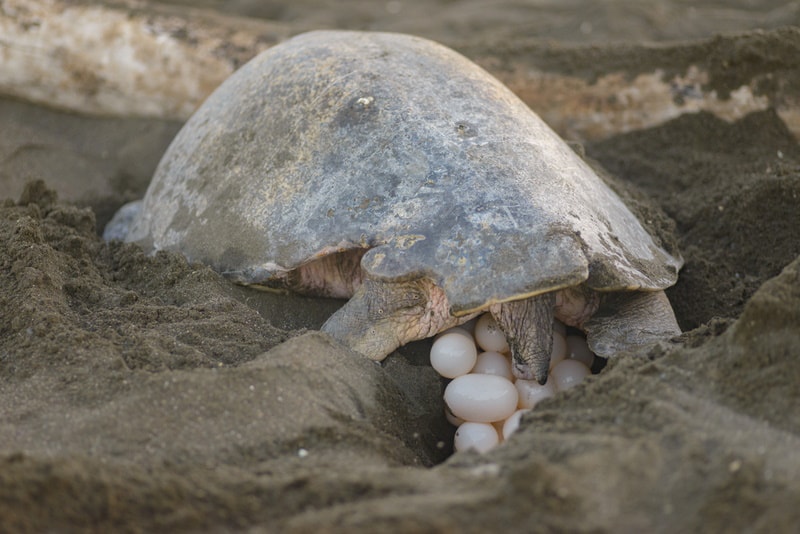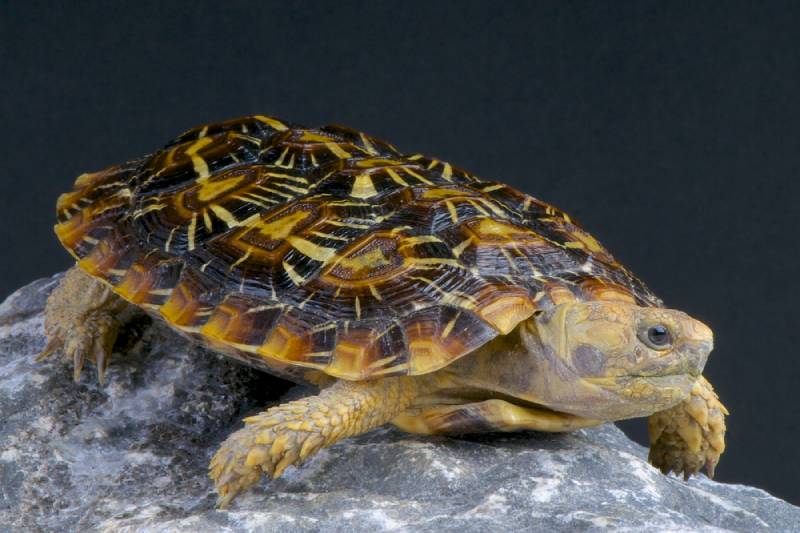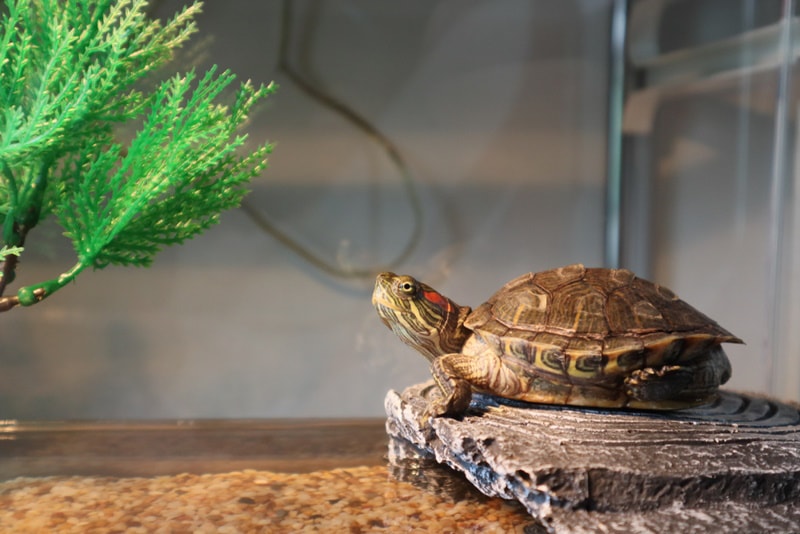How Do Turtles Mate? Vet-Reviewed Reproduction Facts & FAQ
Updated on

Click to Skip Ahead
If you’re a turtle lover, you probably like knowing anything and everything about these amazing reptiles. For example, how do turtles mate? What happens during this process? Courtship rituals vary and depend on the particular turtle species, though as a general rule, aquatic turtles mate in the water, and terrestrial turtles mate on land.
If you’d like to know more about how turtles mate, check out the rest of this article, as we cover everything that you need to know about the reproduction of these unique reptiles.
Turtle Reproduction 101
When Are Turtles Ready for Mating?
For turtles to mate, they need to reach sexual maturity, which occurs in their late juvenile stage. The precise age at which the juvenile stage starts varies by species. Some turtle species will become sexually mature at the age of 5, while others may need 10 or more years to be ready for mating.
How Do Turtles Mate?

The mating rituals of turtles vary depending on the turtle species. Most of the aquatic turtles that are usually kept as pets mate in the water.
- Spring
- Summer
- Fall
For the mating process to happen and be successful, the temperature of the water where mating will take place needs to be between 50°F and 77°F. The specific courtship rituals depend on the particular turtle species, though there are a few general traits.
- Aquatic/semi-aquatic turtles — The courtship process begins after a male follows a particular female, and they meet one another face to face. Male turtles use their front claws to caress the female’s face and neck; if the female is interested, she will reciprocate the gesture. Turtles repeat this process until the female goes into the water and swims to the bottom, giving the male partner a signal to join her because she’s ready for copulation. The male red-eared slider engages in a “seductive dance” that involves swimming ahead of his prospective mate and waggling his claw at her in the hope of winning her affection!
- Terrestrial turtles — The courtship process of terrestrial turtles is a bit less graceful, as these turtles mate on land. Typically, male turtles find females and render them immobile by either nipping or biting their heads, limbs, necks, and anterior carapace (top shell). The mating process might involve shell bumping with the male grunting, squealing, and nodding his head.
When and How Do Turtles Lay Eggs?

After mating, turtles usually go through a gestation period that lasts around 3–6 weeks. Before laying eggs, all turtles will adequately prepare and dig a nest for their young which is always located on land, even in sea turtles that spend the rest of their lives in the ocean. As the time to lay her eggs approaches, the female will spend less time in the water and instead search the land for a perfect spot to lay her eggs.
Most turtles like to make nests in sunny spots with moist, sandy soil. However, if the weather outside is extremely hot, the female may delay digging the nest until the weather slightly cools.
After the female digs the nest, she will deposit the eggs, and cover them with earth and leaf litter. For many turtle species, the mother’s job is now mostly done.
Female turtles have unique body anatomy that enables them to store sperm inside their bodies, and that sperm can stay viable for up to 3 years. The turtles can later use it to have up to three new egg clutches.
Due to this interesting ability, female turtles can often lay a single clutch with eggs that have different fathers.
How Many Eggs Do Turtles Usually Lay?
The clutch size—the number of eggs that a turtle lays at once—depends on the species. It’s often hard to determine the precise number of eggs that turtles will lay because they often have multiple clutches per year.
Sea turtles are particularly prolific, laying over 100 eggs at a time, and having multiple clutches in a season. This is due to the high mortality of turtle hatchlings.
The average pet turtle species will lay around 6-8 eggs per clutch and may have 2-3 clutches per season.
How Long Is the Incubation Period? What Do the Hatchlings Look Like?

For most turtle species, the incubation period of the eggs lasts between 45 and 75 days, depending on the temperature. Turtle eggs develop quickly in warm temperatures, and their development may slow in cold temperatures.
After the incubation time passes, hatchlings will use a small bump on their nose, called the egg tooth, to break the eggshell. This bump is usually on the turtle’s nose for about 1 hour before it falls off, so they have a limited time to get out of the egg. The hatchlings then uncurl their shells and bodies. Although small, they look like fully formed adult turtles, just in miniature form.
A baby turtle will have a small yolk sack protruding from their plastron (underside) after leaving the egg. The function of this sack is similar to the mammalian placenta that mammals and humans have after birth. It provides nourishment throughout the baby turtle’s first days of life and is later absorbed into the body.
Can You Breed Turtles in Captivity?
If you’re a turtle lover, you might have considered breeding your turtles. When turtles are kept in captivity, the breeding process usually won’t happen as spontaneously as in the wilderness; human intervention is almost always necessary for mating to begin.
When you consider the various requirements for optimal mating and laying – ideal temperature and humidity, sunny location, deep substrate for digging, appropriate water temperature and depth – all these factors need to be provided if a turtle is to successfully mate in captivity. This is why it’s best to leave it to professional herpetologists who understand all medicinal, legal, and husbandry issues related to breeding a particular turtle species.
PLEASE NOTE: THERE ARE STRICT LAWS AND REGULATIONS REGARDING THE BREEDING OF TURTLES AND TORTOISES, AS WELL AS SELLING AND PURCHASING CERTAIN BREEDS AND AGES. BEFORE PURCHASING OR BREEDING ANY TURTLES, REFER TO THE RELEVANT AUTHORITY OF YOUR STATE/COUNTRY.
Can a Female Turtle Lay Eggs If She Was Never Involved in Mating?

Like chickens, turtles can, and will, lay eggs even if there was no mating involved and there’s no male turtle present. These eggs are infertile, but you’ll still need to provide your turtle with extra nutrition and nesting space at this time.
This means that even an unmated female turtle can be affected by some of the health problems that can be associated with egg-laying, such as calcium deficiency, eggs that rupture internally, or impacted eggs. Signs of these problems in female turtles include:
- Lack of appetite
- Lack of energy
- Poor swimming
- Bulging eyes
If you notice any of these signs in your female turtle, speak to a veterinarian with experience in reptiles to ensure that she won’t experience any further health issues.
Final Thoughts
The turtle mating process varies depending on the turtle species. In most cases, the males are the ones approaching the females, each with a unique courtship. Aquatic and semi-aquatic turtles display gentle, almost tender interactions when it comes to mating, whereas terrestrial species have a somewhat more “rough and clumsy” approach.
Featured Image Credit: Elly Miller, Shutterstock











